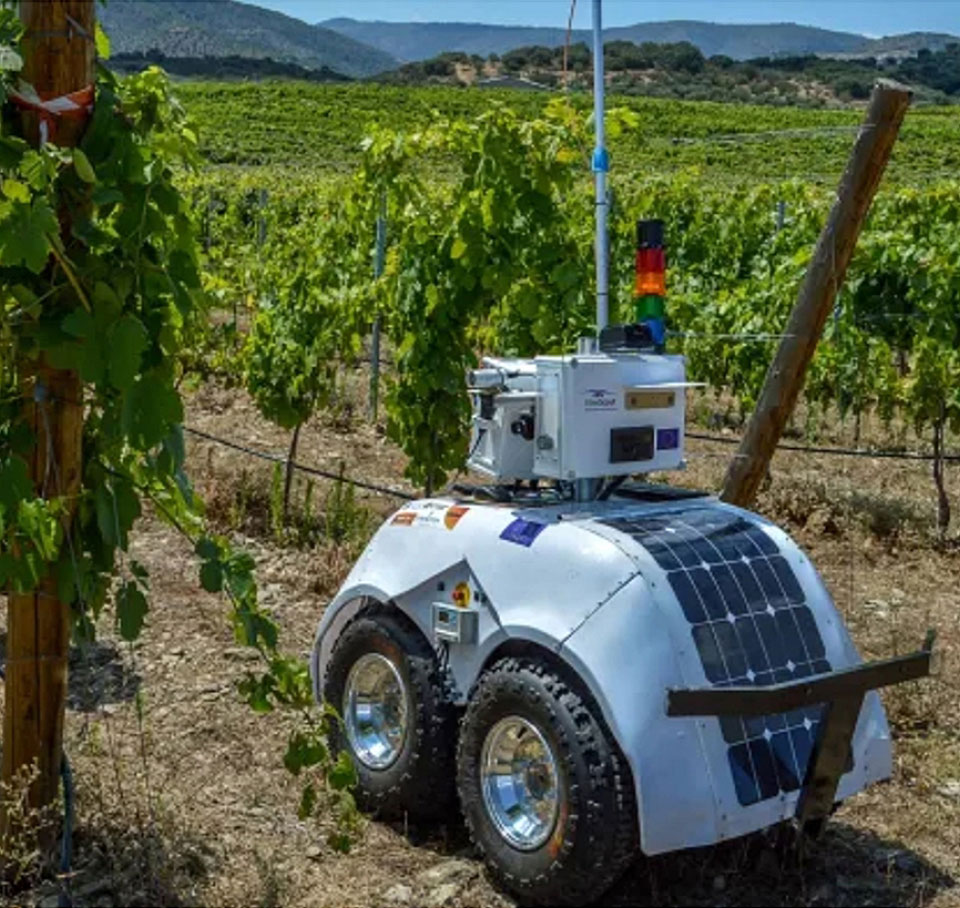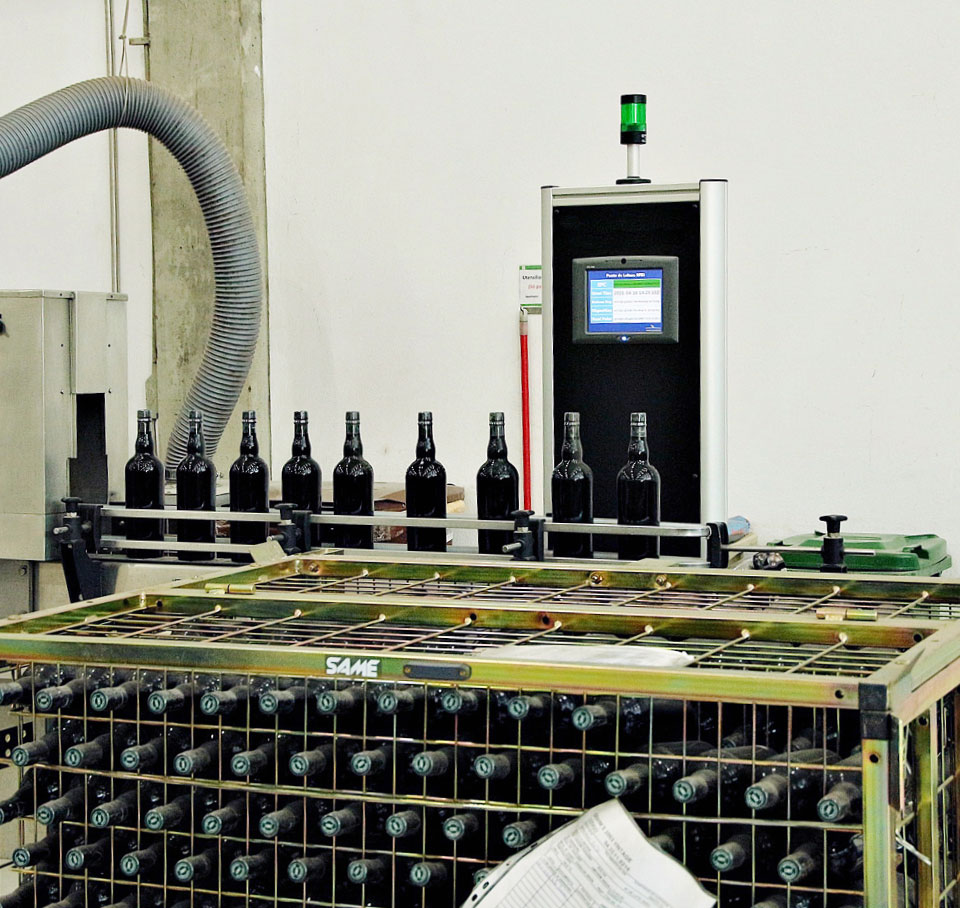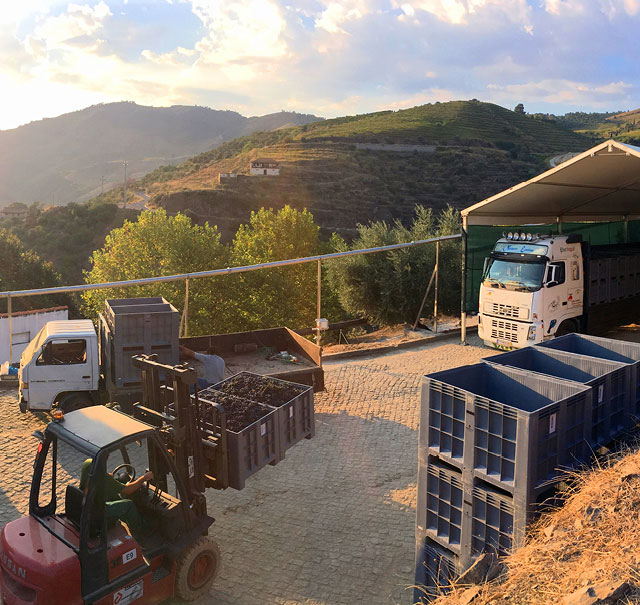Load Carrier Tracking with RFID in Wine Production
Wine is produced on 1,024 hectares under the Portuguese sun

The vineyards of the Portuguese Port and Douro wine producer Symington Family Estates extend over 1,024 hectares. Founded in 1882, the company is already in its 5th family generation. The leading organic wine producer in the north of Portugal optimizes internal logistics processes with RFID.
VineScout: Robots against labor shortage and climate change

The Port and Douro wines are distributed worldwide to more than 120 countries. Around 24 million bottles are sold each year. More than 20,000 employees are needed for the harvest in the entire region – Symington employs 800.
Organic and Experimental
With approximately 132 hectares, Symington has the largest certified organic vineyard area in northern Portugal. In addition, the company operates experimental vineyards to test new wine varieties. The grape variety libraries in Ataíde (53 grape varieties) and in Bomfim (31 grape varieties), are the largest collection of indigenous grape varieties in Portugal.
All vineyards – a total of 1,024 hectares – are managed according to strict specifications and with the goal of minimal interference. To market its products, Symington operates four leading port houses and offers a portfolio of Douro wines.
Robots Roll Through the Vineyards
The data collected provides information on the influences of temperature, rain and irrigation. Vineyard irrigation management is remote and automated via sensor technology. In the event of sudden changes in the climate, it is imperative to be able to react within a few hours – this is only possible with digital solutions. Two machines for harvesting the grapes are used on the terraced vineyards.
Information on the degree of ripeness and position is transmitted to the machine. Certain areas can be left out in advance. If the machine is then used the next time, the data from the previous operation is already processed automatically and the next unit is configured correctly.
Since 2015, Semi-Finished Goods are Labeled with Hybrid Barcode and RFID Labels
RFID Tracking for All Semi-Finished Products
RFID integration started in 2015 and took place in the production process of semi-finished products in order to streamline internal processes and to eliminate manual errors. In addition, the supply chain was to be optimized. Symington uses EPC Gen2v2 tags with the EPC Binary Coding Scheme SSCC-96 and EPCIS events for communication with SAP. The RFID tags are encoded inhouse. The chip has a 128-bit EPC and a 32-bit user memory. For cost reasons, the finished end products were not initially part of the RFID rollout.
Load Carrier Tracked in Real Time
While the wine is being bottled, two labels with GS1-128 barcodes and RFID SSCC-96 are printed. These are attached to the metal load carrier, which holds around 600 bottles. Once the filling process is complete, the incoming goods are recorded in the ERP system. The RFID transponders guarantee the localization and tracking of the load carrier in real time. The load carrier is then transferred to the warehouse. An RFID reader is located at the entrance gate.
Each time a transponder passes the reader, the location, ID of the handling unit as Serial Shipping Container Code and time zone are forwarded to the ERP system according to the EPCIS standard. A total of three RFID readers are installed. Two at the final production lines and one reader at the entrance gate to the warehouse.
Final Production Process Takes Place After Several Years
The semi-finished product is stored on the load carrier for an extended period of time – in some cases several years – until it is returned to the production hall for the final finishing process. By law, certain products must be filled and stored at a specified time – even if the sale does not take place until years later. When the semi-finished product is taken to the final production lines for the final steps – labeling and packaging – readers on the production lines capture the RFID label. Thus, the entire internal process chain is controlled and monitored. The correct finishing of the product with the corresponding label is guaranteed.
The semi-finished products are in a queue according to the “first in, first out” principle in the production line. RFID detection ensures traceability.






